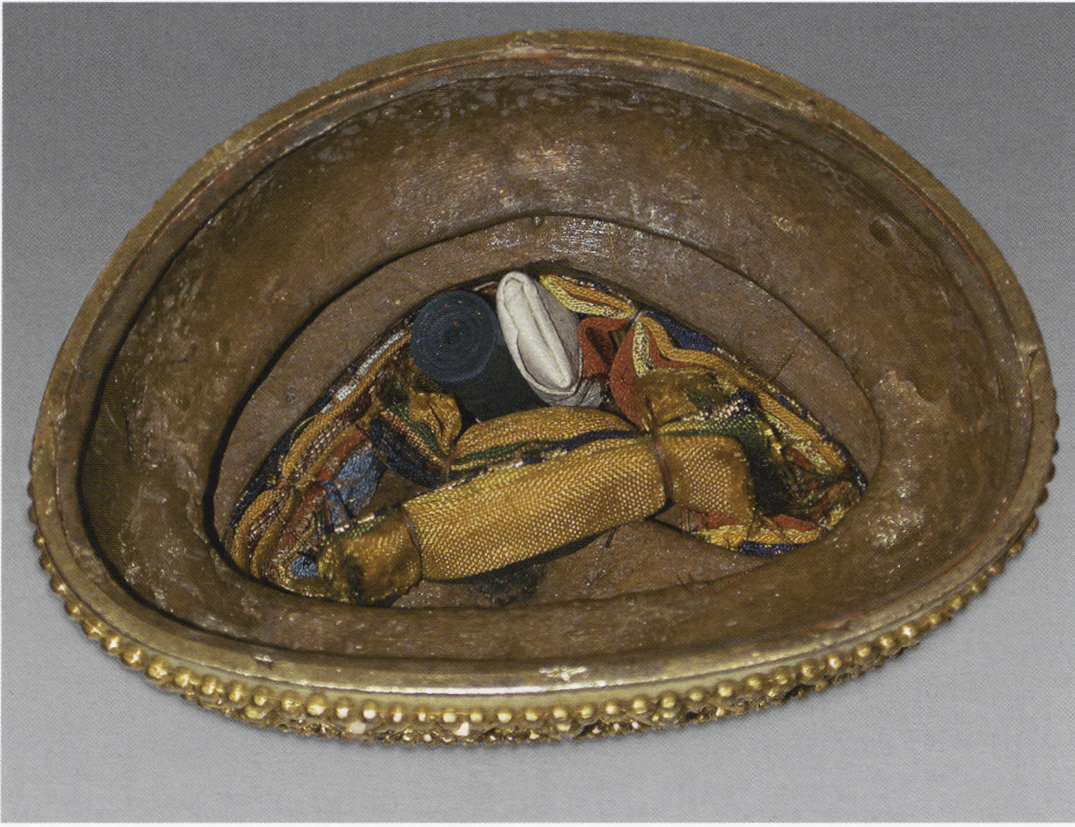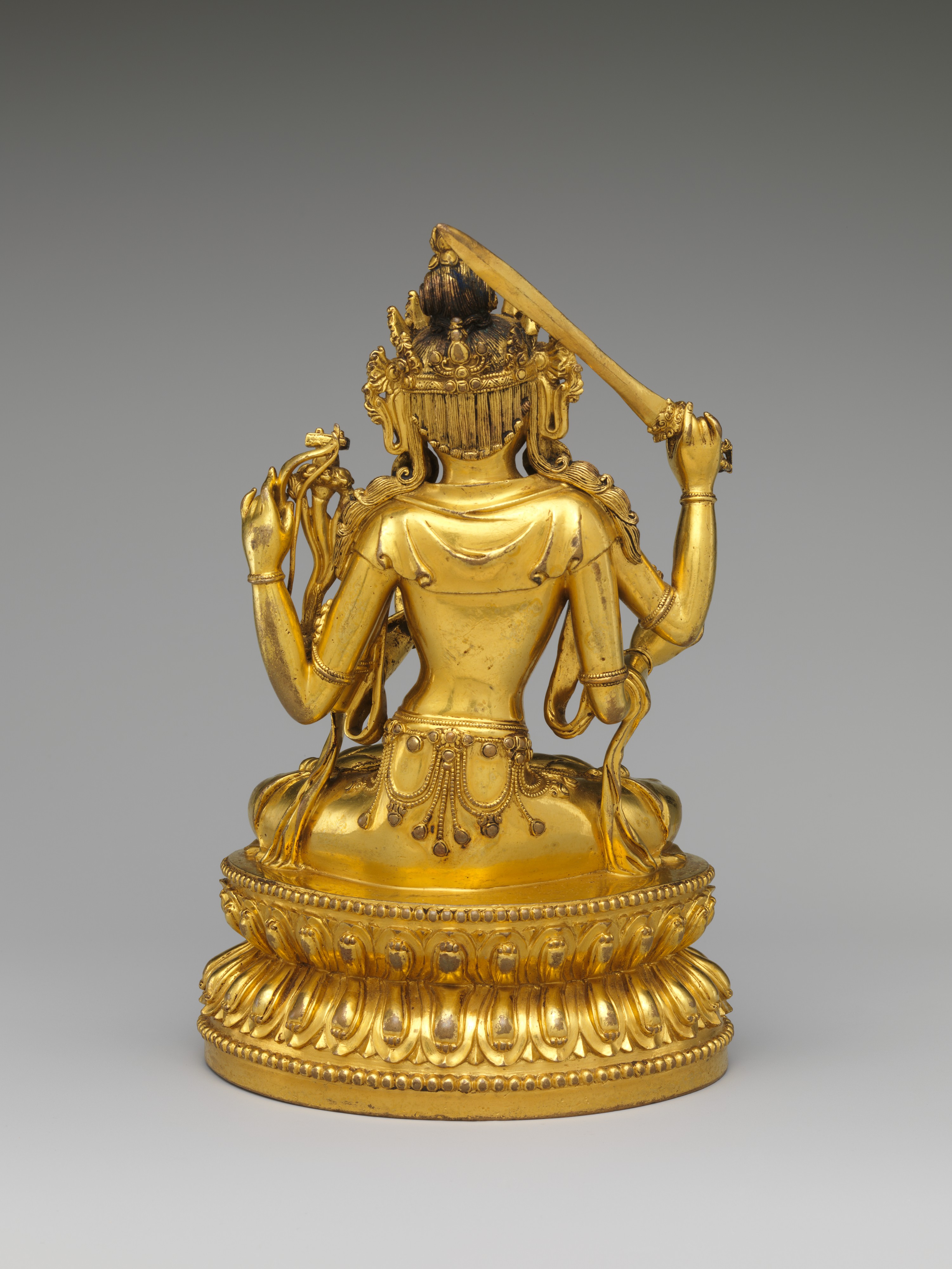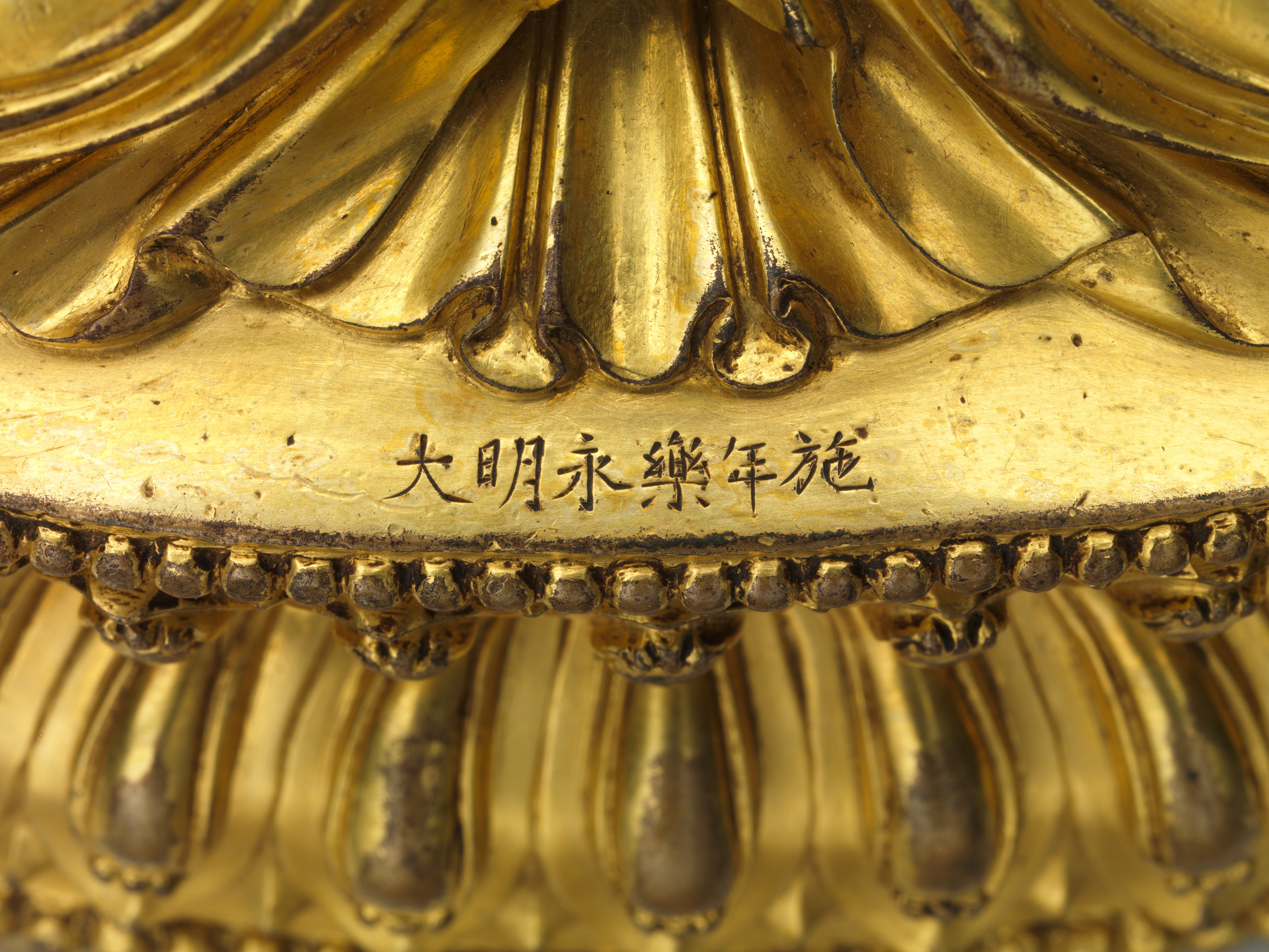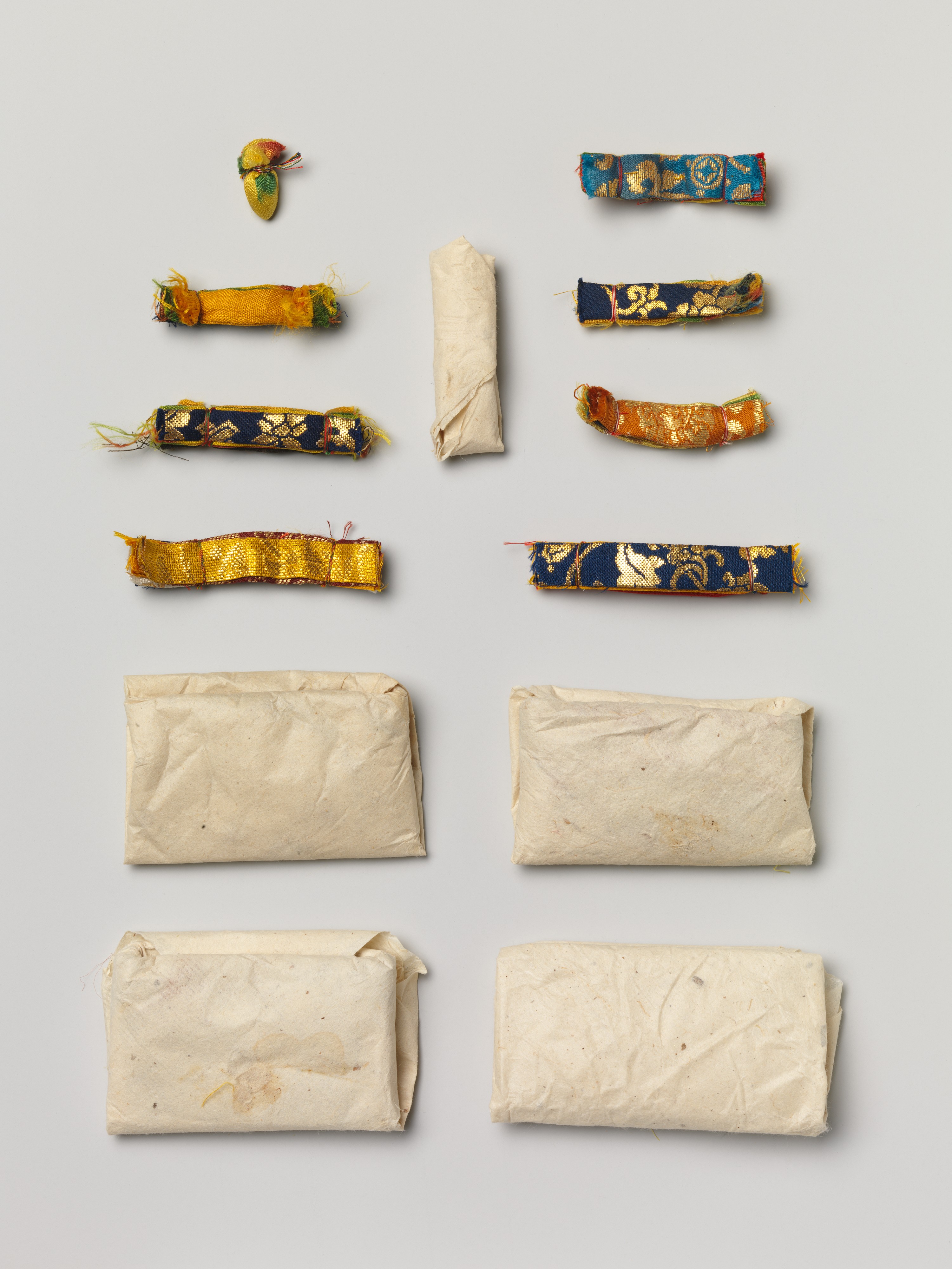Bodhisattva Manjushri as Tikshna-Manjushri (Minjie Wenshu)
Ming dynasty (1368–1644), Yongle period (1403–24)
Manjushri holds a sword in his primary right hand and a volume of the Perfection of Wisdom Sutra (which rests on a small lotus) in his left. Remnants of a bow and arrow can be seen in his secondary hands, and the combination of the four implements identify the sculpture as a Tikshna- Manjushri, a manifestation that refers to the bodhisattva’s quick wit while further elucidating his position as an embodiment of spiritual wisdom.
The inscription at the front of the lotus pedestal indicates that it was cast during the reign of the Yongle emperor, who is known to have followed esoteric or Tibetan Buddhist practices and to have sponsored the production of numerous sculptures in a style derived from India and the Himalayas. The soft folds of the clothing are typical of works produced in imperial workshops, as are the delicacy of the details and the rich pink tones of the gilding.
#7343. Bodhisattva Manjushri as Tikshna-Manjushri (Minjie Wenshu), Part 1
-
7343. Bodhisattva Manjushri as Tikshna-Manjushri (Minjie Wenshu), Part 1
-
7457. Bodhisattva Manjushri as Tikshna-Manjushri (Minjie Wenshu), Part 2
Playlist
Due to rights restrictions, this image cannot be enlarged, viewed at full screen, or downloaded.
This artwork is meant to be viewed from right to left. Scroll left to view more.







